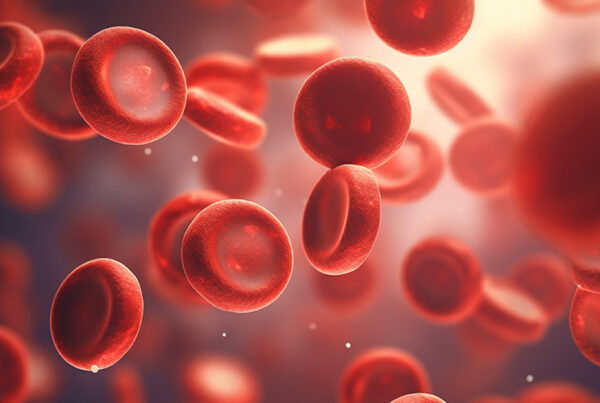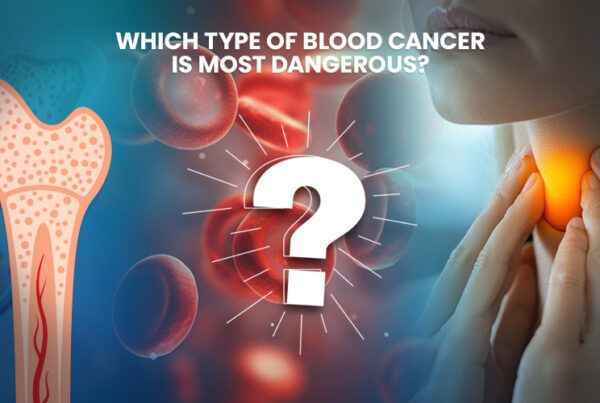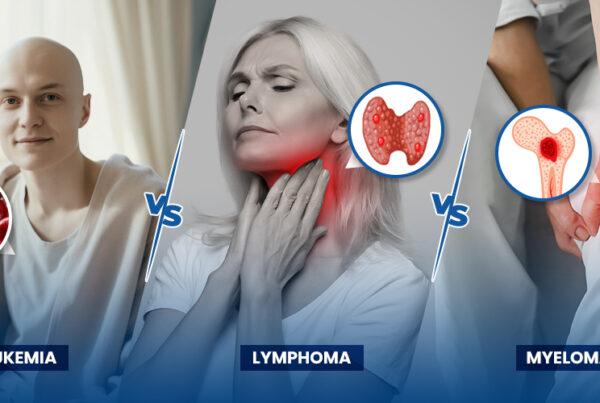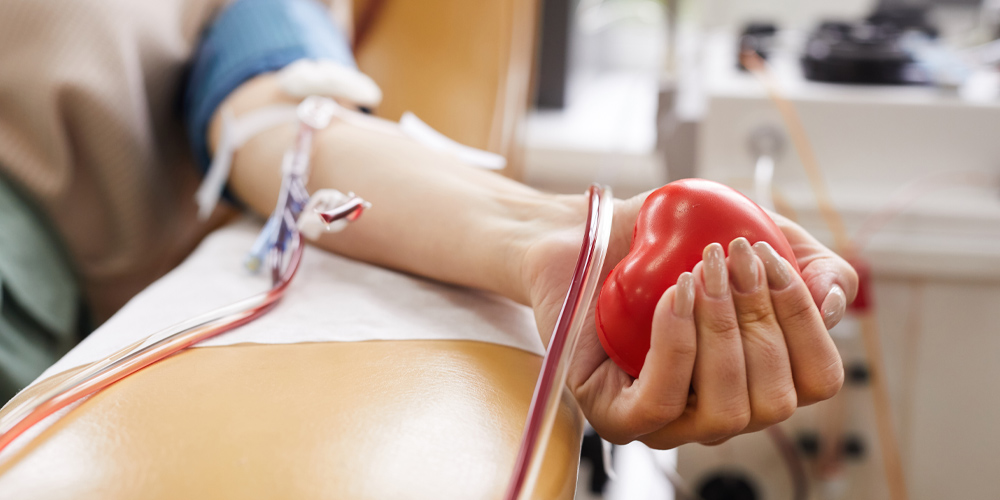
Low hemoglobin, also known as anemia, occurs when your blood has reduced levels of hemoglobin, a protein responsible for carrying oxygen throughout the body. This condition can be caused by insufficient iron, chronic illnesses, or certain types of cancer. Low hemoglobin causes in cancer can include issues with red blood cell production, blood loss, or complications related to treatments.
Symptoms of Low Hemoglobin
Identifying anemia symptoms in cancer early can make a difference in management. Common symptoms include:
- Fatigue: Feeling tired even after adequate rest.
- Shortness of Breath: Difficulty breathing during physical activity.
- Dizziness: Feeling lightheaded, especially when standing up.
- Paleness: A noticeable change in the color of skin, gums, or nails.
- Weakness: A lack of energy for everyday tasks.
Symptoms vary depending on how severe the condition is. Moreover, persistent symptoms warrant a medical evaluation, particularly if cancer is a concern.
Does Cancer Cause Low Hemoglobin?
Yes, cancer can significantly lower hemoglobin levels, often leading to anemia. What type of cancer causes low hemoglobin? Many types of cancer disrupt red blood cell production or cause chronic blood loss. Let’s explore the types of cancer linked to anemia and how they interact with blood cell production.
Why Cancer Causes Low Hemoglobin
Certain cancers and their treatments interfere with normal blood functions. For instance, cancer can lead to low hemoglobin causes in cancer such as:
- Bone Marrow Suppression: Blood cancers like Lung Cancer leukemia or lymphoma affect the bone marrow’s ability to produce red blood cells.
- Nutritional Deficiencies: Gastrointestinal cancers can impair nutrient absorption, causing deficiencies in iron, vitamin B12, or folate needed for red blood cell production.
- Chronic Inflammation: Some cancers cause long-term inflammation, altering how the body uses iron and impairing red blood cell development.
In addition, cancer-related blood loss, whether due to tumors or treatments, further contributes to low hemoglobin levels.
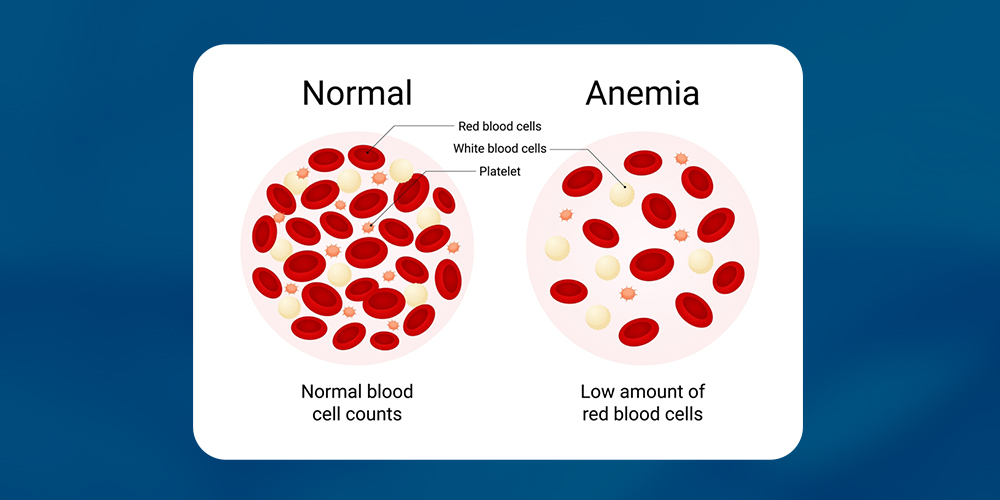
Types of Cancer Linked to Low Hemoglobin
Here’s a detailed overview of the types of cancer that lead to low hemoglobin and their impact on the body:
1. Blood and Bone Marrow Cancers
Blood and bone marrow cancers disrupt the production and function of blood cells. These cancers include:
- Leukemia: This cancer develops in your blood and bone marrow. It happens when too many abnormal white blood cells are produced too quickly. Normally, white blood cells help fight infections, but these abnormal cells crowd out healthy blood cells. As a result, your bone marrow struggles to make enough red blood cells and platelets, leading to anemia and other complications.
- Lymphoma: The lymphatic system, which helps remove excess fluid from your body and fights infections, can be affected by lymphoma. This occurs when abnormal white blood cells, called lymphocytes, build up in your lymph nodes and tissues. Over time, this buildup weakens your immune system, making it harder to fight infections.
- Myeloma: Plasma cells, a type of white blood cell, are responsible for producing antibodies that help protect you from infections. In myeloma, these plasma cells become cancerous and interfere with the production of normal antibodies. Consequently, your immune system becomes less effective, leaving you more vulnerable to illnesses.
Furthermore, cancers that spread to the bones can hinder red blood cell production, causing anemia.
2. Cervical Cancer
Nearly half of all cervical cancer patients experience anemia, often due to tumor-related bleeding. Additionally, the cancer may spread to the bone marrow or reduce appetite, leading to malnutrition and anemia.
3. Colon Cancer
Anemia symptoms in cancer are sometimes the first signs of colon cancer. Chronic blood loss from tumors in the colon can result in iron deficiency anemia, even when blood loss isn’t visible in stool.
4. Kidney Cancer
Kidney cancer, particularly renal cell carcinoma, impacts the kidneys’ ability to produce erythropoietin—a hormone essential for red blood cell production. This disruption is a common cause of anemia in kidney cancer patients.
5. Metastatic Breast Cancer
When breast cancer spreads to the bone marrow, it affects red blood cell production, causing anemia. Occult breast cancer is a rare type of breast cancer where no tumor is found in the breast itself, but cancer is detected in other parts of the body, like the lymph nodes. It happens in less than 1% of breast cancer cases and can be hard to diagnose because there’s no obvious lump in the breast.
6. Prostate Cancer
Anemia can be one of the early signs of prostate cancer. Notably, treatments like androgen deprivation therapy (ADT) can also reduce red blood cell production, worsening anemia in advanced stages.
7. Lung Cancer
Lung cancer often leads to anemia, which can worsen the prognosis. Causes include cancer spreading to the bone marrow, chronic inflammation from cytokine release, and low oxygen levels (tumor hypoxia), which make the cancer harder to treat.
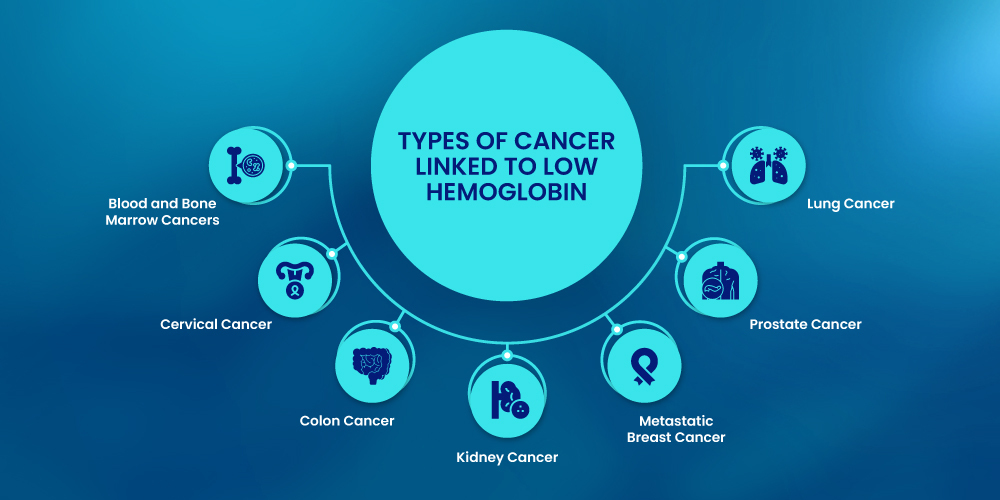
Addressing Low Hemoglobin in Cancer
Treating anemia in cancer patients requires a multi-faceted approach, addressing both the underlying cancer and anemia itself. Effective management improves quality of life and enhances treatment outcomes.
By understanding what type of cancer causes low hemoglobin, patients and caregivers can work closely with healthcare providers to recognize and manage this common complication.
How Doctors Diagnose Low Hemoglobin?
To diagnose low hemoglobin, your doctor will carefully review various lab results to pinpoint the cause. These key tests include:
- Hemoglobin Levels: This measures the iron-rich protein in red blood cells that carries oxygen.
- Red Blood Cell Count: This shows how many red blood cells are present in your blood.
- Hematocrit: This measures the percentage of red blood cells in your total blood volume.
- Mean Corpuscular Volume (MCV): This determines the average size of your red blood cells.
- Red Cell Distribution Width (RDW): This checks for variation in the sizes of your red blood cells.
- Mean Corpuscular Hemoglobin (MCH): This calculates the average amount of hemoglobin in each red blood cell.
- Mean Corpuscular Hemoglobin Concentration (MCHC): This evaluates how much hemoglobin is in a red blood cell compared to its size.
Normal hemoglobin levels typically range from 14-16 g/dL for men and 12-15 g/dL for women. If your levels fall below these ranges, it may indicate low hemoglobin.
To further understand the cause, doctors may also check for additional abnormalities in your lab results. For instance:
- Iron Deficiency Anemia: If caused by chronic bleeding, your red blood cells might be smaller (microcytic) and lighter in color (hypochromic).
- Platelet Count: This may be higher as your body tries to compensate for the anemia by producing more blood cells.
- White Blood Cell Count: Moreover, an elevated count could point to an infection or inflammatory condition.
By analyzing these lab results, your doctor can identify the root cause of low hemoglobin and recommend the appropriate treatment.
Oncology Clinical Trials: Advancing Cancer Treatment
Clinical trials in oncology play a crucial role in developing new and effective treatments for various types of cancer. These trials offer new possibilities to patients by testing innovative therapies, enhancing understanding of disease mechanisms, and improving overall care. Participating in a clinical trial offers access to cutting-edge treatments while contributing to medical research. Below are ongoing trials for specific types of cancers:
- Follicular lymphoma clinical trials
- Multiple myeloma clinical trials
- Diffuse large B-cell lymphoma clinical trials
- Chronic myelogenous leukemia clinical trials
These clinical trials are shaping the future of oncology, offering new possibilities for patients worldwide.
Conclusion
In conclusion, understanding the connection between cancer and low hemoglobin is essential for timely diagnosis and effective management. Many types of cancer that cause anemia, such as leukemia, colon cancer, and kidney cancer, disrupt red blood cell production or lead to chronic blood loss. Addressing anemia alongside cancer treatment improves patients’ quality of life and boosts treatment success. With advancements in oncology, clinical trials continue to explore innovative therapies, providing new hope for managing both cancer and its complications. By staying informed, patients and caregivers can work closely with healthcare teams to navigate this challenging aspect of cancer care.

